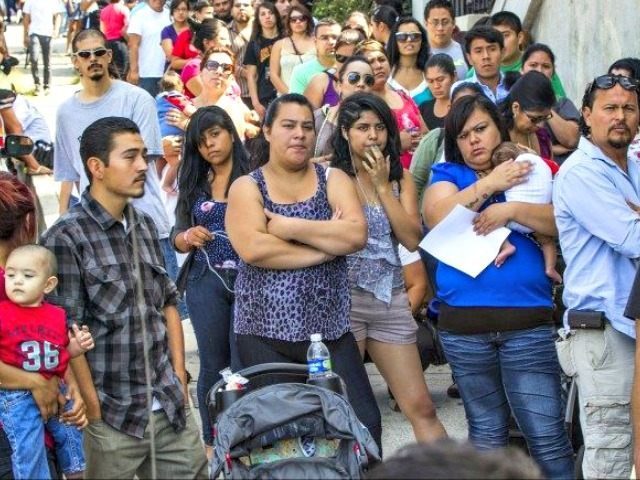WASHINGTON, D.C.—The extremely high inflow of immigrants is dragging young immigrants away from integrating into mainstream, middle-class American culture, and is pushing them to assimilate into the marginal culture of poverty-stricken minority communities, immigration experts say.
“They’re assimilating, but they’re assimilating down,” said Boston College professor and nonresident senior Brookings Institute fellow Peter Skerry during a panel discussion held by the non-partisan Center for Immigration Studies (CIS) on Tuesday.
“They’re assimilating in various negative or counter-productive or dysfunctional ways—in the way that Mexican immigrants, there’s lots of evidence now, are assimilating … to our fast food culture in ways that lead to problems with obesity and diabetes,” Skerry said.
“That’s a particular assimilation problem. It’s not a problem of ‘not assimilating.’ It’s assimilating in a dysfunctional way,” he said.
Data presented in September 2016 by the National Academies of Science, for example, shows that even the American children of unskilled immigrants tend to be so poor that they consume more in welfare and aid than they pay in taxes over their lifetime.
The assimilation problem is highlighted by a CIS report which analyzed the soaring migrant population in school districts around the nation, and showed that nearly a quarter of all students enrolled in schools meant for Americans were actually from “an immigrant household” in 2015.
Mass migration is transforming Americans’ public schools, said CIS Director of Research Steven Camarota. A majority of Americans “say the country should have an essential culture that immigrants adopt, but there no longer exists a clear understanding of what we want from immigrants,” he said. “The lack of agreement means immigrants often receive mixed messages about assimilation.”
“Of course the United States needs to educate children from immigrant households already here,” he said. “Nearly one in four children… in public school today is from an immigrant household. So how these children do is vitally important, not only for them, but to our country as a whole.”
Ongoing waves of impoverished migrants from sharply different cultures makes it difficult to assimilate the millions of migrants already in the U.S.
“A key policy question is moving forward for our country is whether to makes sense to continue to admit one million legal permanent immigrants each year, and to tolerate widespread illegal immigration without regard to the absorption capacity of our schools,” he added.
It’s important to examine the context in which immigrants and their children do assimilate, Skerry explained when laying out his views on migration and assimilation in the U.S.
“Assimilation in its common-sense meaning, the way in which it’s typically understood… Assimilation in the sense that many social scientists look at these issues, carefully, carefully, is it’s virtually inevitable that one way or another—immigrants adapt to their context, OK?” Skerry said. “And their context in a crowded, urban school in the United States is not the context where they came from almost by definition, OK.”
“It’s matter of what they’re assimilating to, and how they’re adapting and changing to the context they find themselves in,” he continued. “In our pluralistic society, I don’t think there’s one, all-encompassing sphere or culture that immigrants adapt to today, or have adapted to in the past. Yes, we have one dominant language. Yes, we have one sovereign nation, albeit we’re not quite sure what some of that means today,” he said.
“Obviously, many immigrants assimilate in much more what most of us consider in more positive ways,” he added.
Reihan Salam, executive editor of National Review, offered an analysis of the problems that mass immigration exacerbates, saying that “two of the chief problems this country has faced for decades” are “ethno-racial inequality” and “multi-generational poverty.”
A society in which “people at the top of society look very different from the people at the bottom of society in a way that is very durable and creates a sort of lasting pattern, that creates negative stereotypes and much else—that can become really toxic,” Salam said.
“When we think about immigration policy, I tend to think about it as secondary to the challenges of multi-generational poverty and ethno-racial inequality,” Salam said. “Is our immigration policy making it easier to tackle these challenges—or is it making it harder to tackle these challenges? And the reason I believe this to be the case is—imagine a society twenty years from now in which, pretty much, everyone who is upper-middle income or ‘rich’ is of Asian descent or of non-Hispanic white descent. And then you have working class… that is disproportionately people of color.”
“Would that society be seen as a fair or just society?” Salam asked. “Is that going to be a society that has legitimacy in the eyes of people who are at the bottom of that society? My sense is that the answer is ‘no.'”

COMMENTS
Please let us know if you're having issues with commenting.